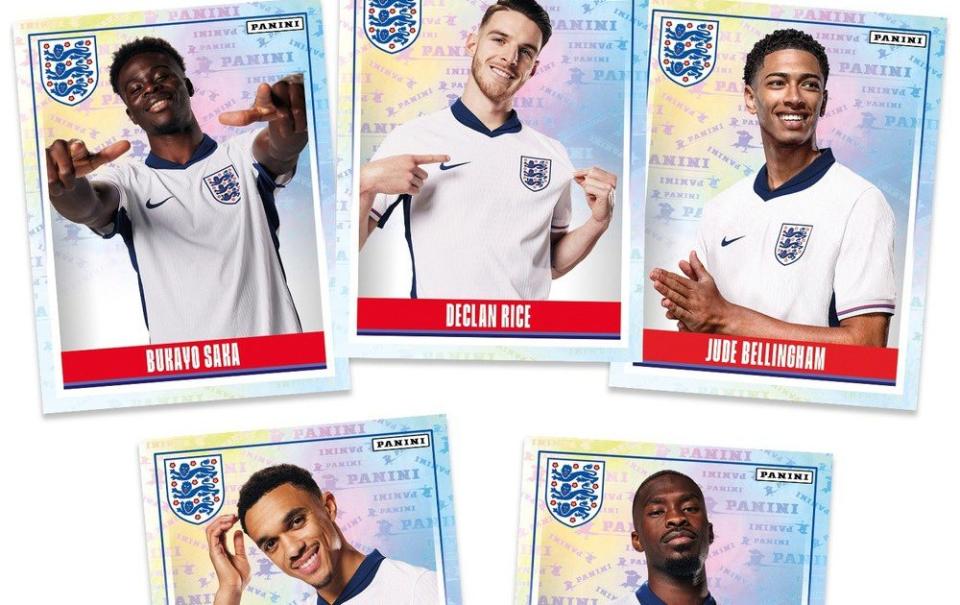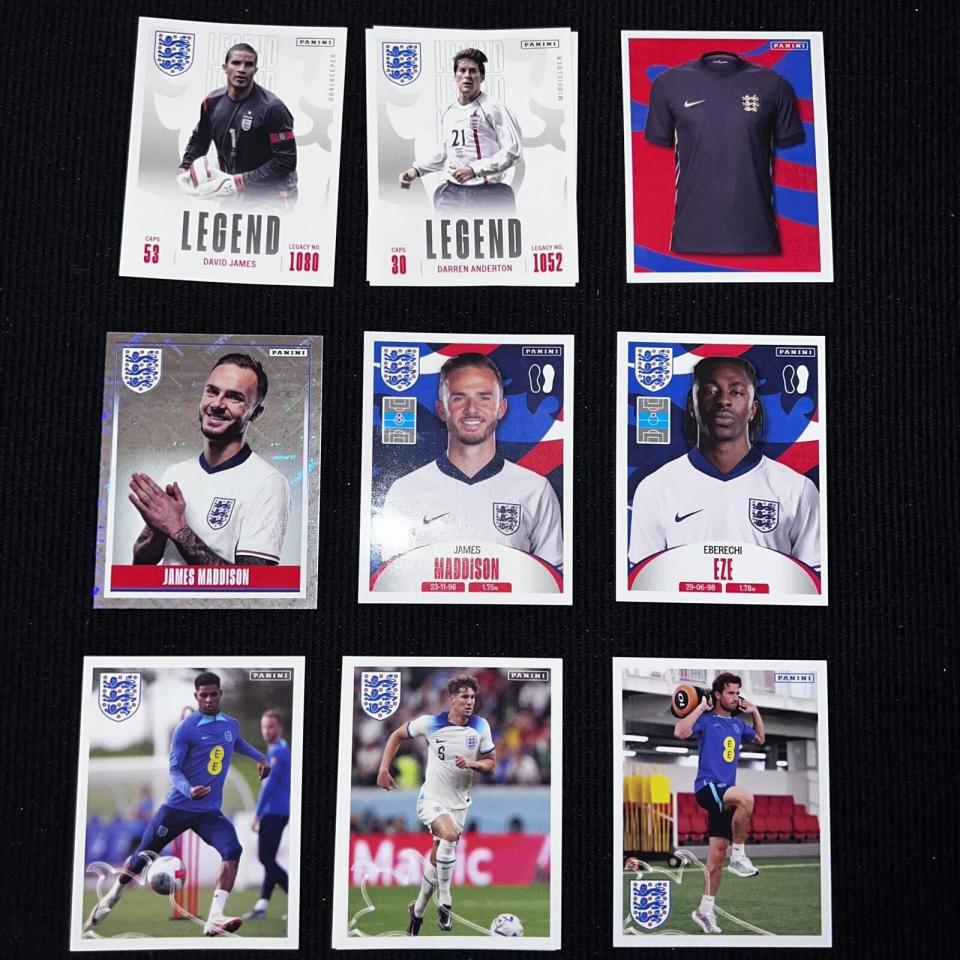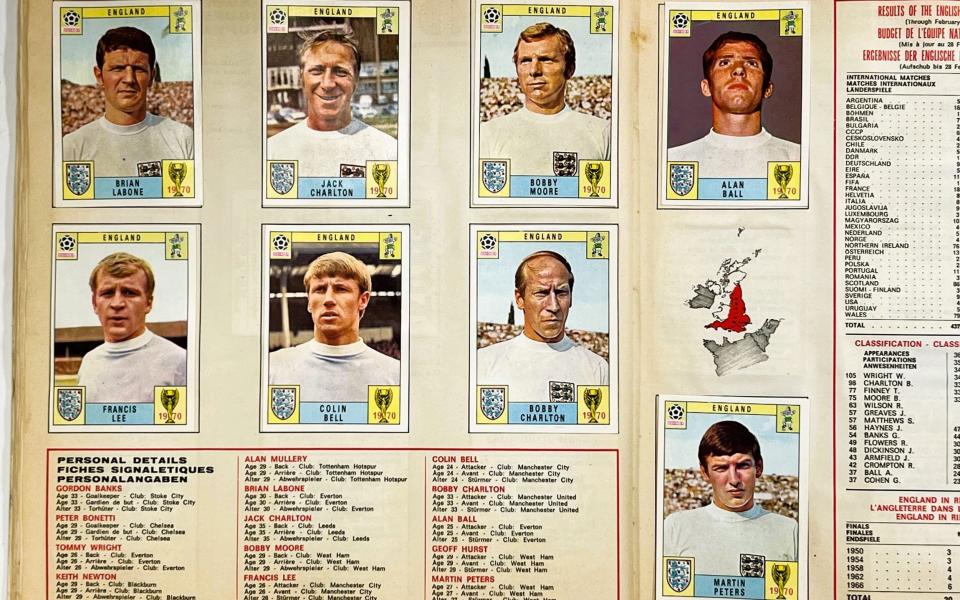Panini fights back in battle of Euro 2024 stickers with the help of M&S

“This isn’t just a photo of Bukayo Saka. This is M&S Bukayo Saka.”
Yes, football stickers used to come from the newsagent. But this spring, throughout the build-up to Euro 2024, you can also pick them up from Britain’s fanciest supermarket. From Tuesday, Marks & Spencer will be giving out limited-edition packs of Panini stickers to anyone spending £20 in one of their stores. It is the latest move in a febrile battle for the football-sticker market, which remains unexpectedly relevant in our digital age.
Until recently, Panini had dominated the market. But they were shown the red card by Uefa in 2022 after a 46-year collaboration. That allowed the American company Topps – who are better known for baseball cards – to controversially claim the Euro 2024 contract.
A fortnight ago, it emerged that leading England players such as Saka, John Stones and Phil Foden had not been included in the official Topps sticker album for the tournament – as licensed by Uefa – because of contractual issues.
Instead, the Topps Euro 2024 album features fringe players such as Ebereche Eze and Callum Wilson, and even a Wales squad despite the fact that Wales were eliminated by Poland in a penalty shoot-out fewer than six weeks ago.

Panini can still produce their own Euro 2024 albums, albeit without Uefa’s imprimatur. And then there are their Home Nation packs, as distributed via M&S, which feature 50 limited-edition stickers and cover England, Scotland, Wales and Northern Ireland. (Only the first two teams qualified for the Euros, which begin on June 14 in Germany.)
According to Jamie Redknapp – who was once a valuable asset in 1990s playground exchanges – the new M&S initiative is “close to my heart”.
“I just think it’s a good thing, because anything you can get that keeps your kids off their screens for a minute has to be a bonus,” said Redknapp of the Home Nation packs, which feature training tips and healthy recipes for pre- and post-match meals.
“Football stickers might sound a bit retro, but when you think about it, there’s so many good parts to it, including the entrepreneurial skills of swapping cards in the playground. When I was that age, we used to go out and play football in the garden, try and keep the ball up a certain number of times. But now kids think ‘I’ve got half-an-hour here, so I can either practise my skills or go on my phone and look at TikTok,’ which is a bit of a worry.”
The football-sticker concept was originally launched by the Panini brothers – Benito and Giuseppe – in their home town of Modena. The brothers realised they were onto something when their very first releases – which depicted flowers and plants, and had to be stuck down with a separate tube of glue – shifted three million units in 1960. They moved into football a year later, and entered the UK market in the late 1970s.

1980s battles and Robert Maxwell
In a recent book and ITV4 documentary, football historian Greg Lansdowne described how sales of Shoot! magazine boomed when it gave away a pack of Panini stickers in 1977.
By the early 1980s, The Sun and the Daily Mirror were fighting a desperate battle for distribution rights. While The Sun might have won the battle, the Mirror won the war when its notorious owner Robert Maxwell stepped in and bought Panini in 1988 for just under £100m.
The company suffered under the ownership of Maxwell – the fraudster who is now perhaps best known as the father of Jeffrey Epstein collaborator Ghislaine Maxwell – as he used their financial reserves to prop up other parts of his business empire. He also employed prison inmates – an ironic twist given his own posthumous exposure as a crook – to sort the stickers into packets.
In the confusion surrounding Maxwell’s death at sea in 1991, Panini missed out on rights to the new Premier League, allowing Merlin – a company formed by four disgruntled former Panini employees – to nip in instead. It took until the 2019-20 season for Panini to win the contract back again.
During their early-1980s heyday, Panini were producing stickers covering everything from pop stars and Flash Gordon characters to the Muppets and even the Royal Family.
A pack of football stickers cost 12p at that stage, but the figure has climbed. M&S may be giving theirs away as a bonus for shoppers, but the Topps Euro album comes in at £1 for a packet of six stickers, while Panini are charging 90p for five.
Such numbers pale by comparison with the record £470,000 paid three years ago at auction for a rare Panini sticker featuring a 19-year-old Diego Maradona. For that sum, you could complete both Euro 2024 albums around 2,000 times.
In recalling his own sticker swaps from the 1980s, 50-year-old Redknapp came over all Proustian.
“I think the first time I really did it was in ’82,” he said, “when Bryan Robson scored that 27-second goal against France at the World Cup. There was always something about the Panini sticker smell, and it hasn’t left me. It’s just a beautiful smell that brings you a bit of nostalgia or maybe reminds you of your childhood.”

 Yahoo Sport
Yahoo Sport 






































